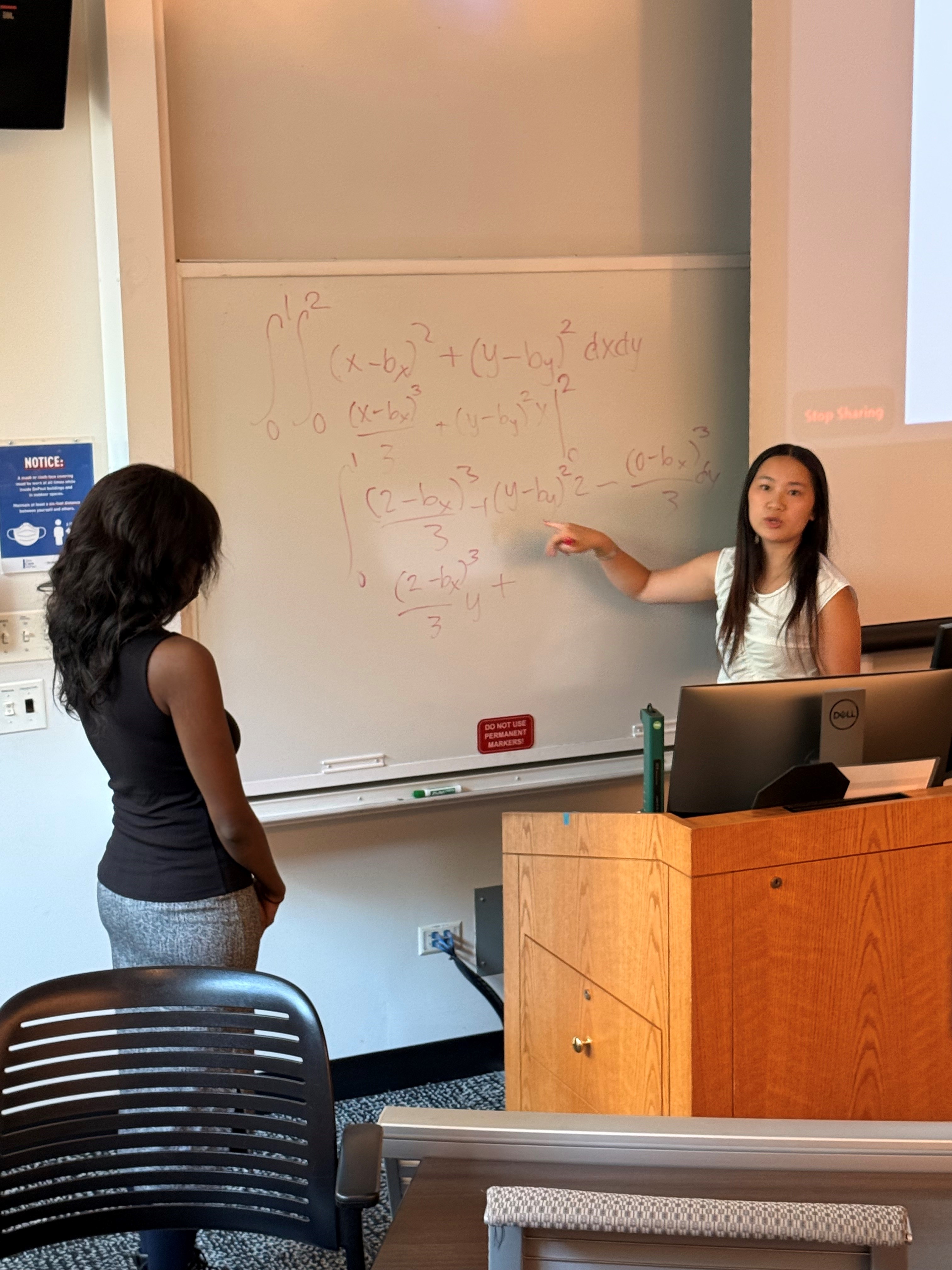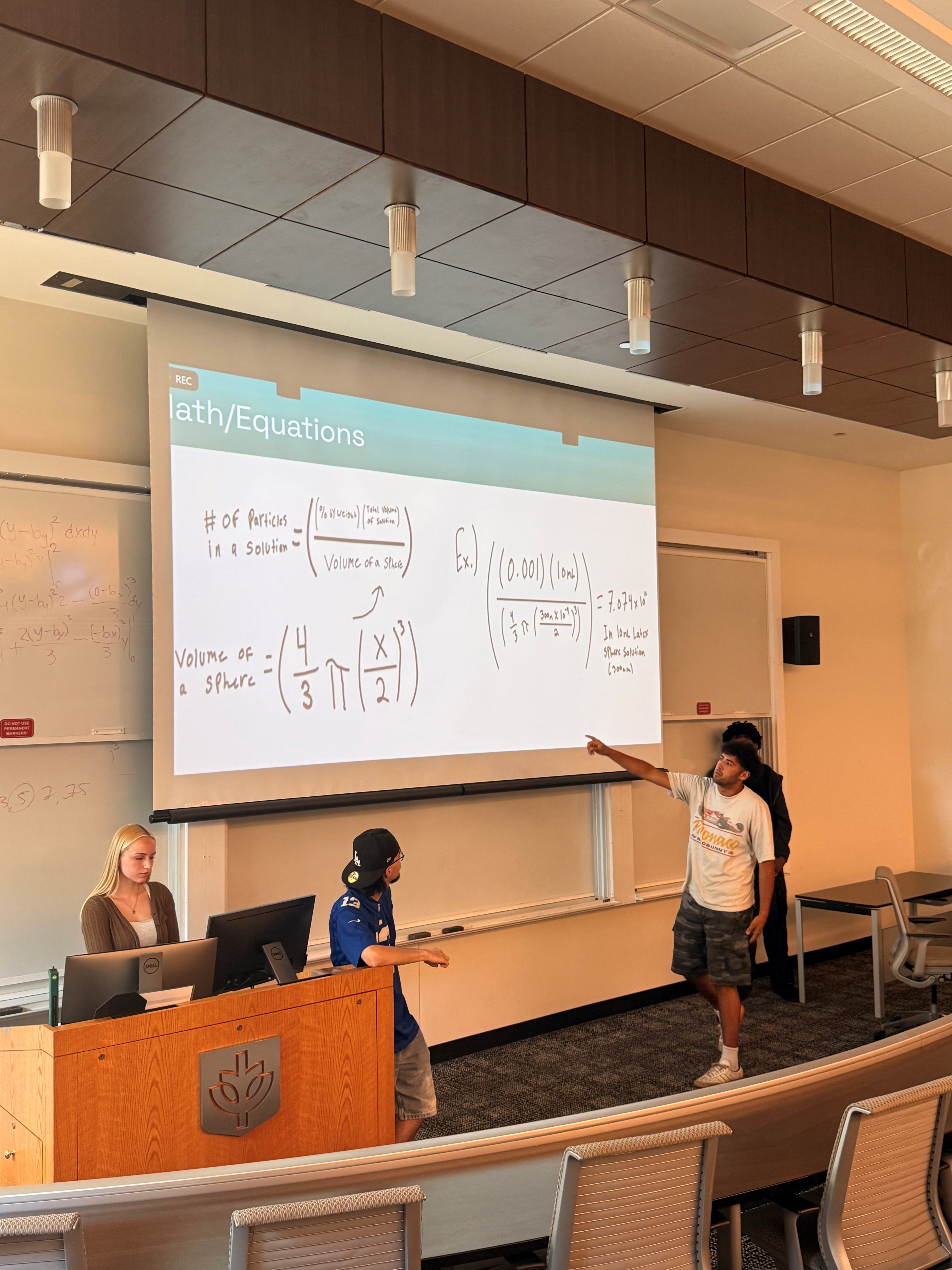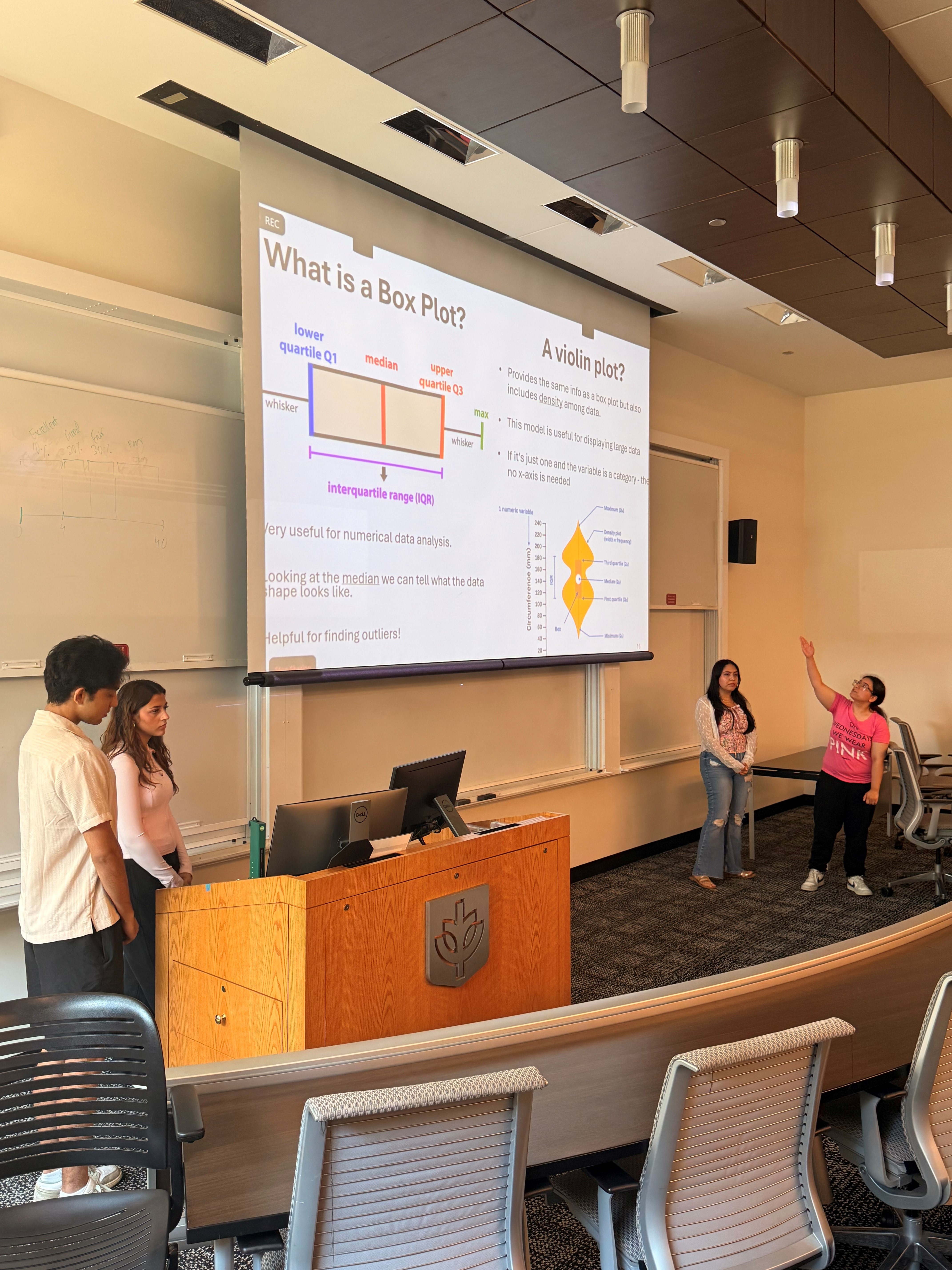Designing communication systems with calculus, tracking motion, heat, and biological activity with light scattering, and predicting disease risk with machine learning – these are some of the novel ideas rising STEM sophomores grappled with this summer as part of the College of Science and Health's inaugural STEM Summer Research Institute.
The program boosts mentorship and scientific training among early undergraduates, who work collaboratively on an original research project. The experience enables students to tackle real-world challenges head on – all while shaping their identities as future scholars. The Institute is currently co-directed by Biological Sciences Associate Professor Margaret Bell and Environmental Sciences and Studies Professor James Montgomery with design and management from CSH Student Success Navigator Emma Pisello.
The three faculty-led research teams, each comprised of four undergraduate students and a graduate student mentor, presented their findings this past September to the university community. The teams worked closely in small groups over a five-week period during the summer to complete their projects.
Beacon mapping
Mathematical Sciences Associate Professor Emily Barnard and Teaching Associate Professor Javid Validashti encouraged students to explore what happens when mathematical modeling and data visualization are used to map the placement of communication beacons in a hypothetical system design. The team included undergraduate students Sacadiya Janow, Shaima Khan Zada, Abigail Walton and Talisa Green, with mentorship support from Pure Mathematics M.S. candidate Anjali Pasupathy.
“So, imagine you're in the city of Chicago and you're trying to figure out the best location for a beacon so that people around that location have the fairest service and the minimum distance from that beacon's location," Khan Zada explains.
 Students present their research on mapping beacons in a hypothetical communication system.
Students present their research on mapping beacons in a hypothetical communication system.To solve this challenge, the team ran multiple projections with both one-dimensional and advanced modeling using linear equation quadratic function slopes, a formula found in calculus to determine the rate of change, or slope, between shifting
x and
y values. These values were differentially altered or 'weighted' to adjust for various distance and location scenarios.
The experiment was more than just theoretical – the group also used the modeling to figure out the best spot in Chicago's Lincoln Park neighborhood for a new grocery store. Ironically, their calculations led them to the corner of Fullerton and Sheffield where a Whole Foods had previously served the community before shutting down in 2024. “So, if we want to make life easier for the college students and the people living in Lincoln Park, we might want to think about bringing it back," the team observed.
Practicing with particles
Another group measured the movements of light, heat, and biological systems using laser light scattering, a process that allows even the most minute actions - such as how molecules move in liquid - to be tracked. With the guidance of Professor of Physics and Astrophysics Eric Landahl and Physics M.S. student Spiros Simotas, the students worked to better understand particles at the microscopic level.
“One of the ways we're understanding particles - one of the best ways to understand things and concepts as a whole - is to put yourself in the shoes of it. So, what did we do? We put ourselves in the shoes and acted like we were particles, acted like we were molecules," says Lucas Rodriguez, one of the students on the project. Fellow peers included Isabelle Anderson, Ky Blake, and Alejandro Campos.
 The group discusses microscopic particles, light scattering, and the calculations behind their research.
The group discusses microscopic particles, light scattering, and the calculations behind their research.The team used a turntable device with laser light scattering and photon detection capabilities to conduct a series of experiments on everyday household products that explore inter-disciplinary concerns spanning physics, chemistry, and environmental sciences. This included reproducing an experiment that tests the Sun Protection Factor, or SPF, of common sunscreen brands by measuring the diameter of zinc oxide and titanium dioxide particles to determine their total percentage. A similar application testing water from a washing machine aimed to discover how many microplastics leak out of clothing during a typical wash cycle.
“I think it just shows that STEM isn't necessarily geared towards any one degree…it incorporates a lot of things and it's just unique and cool to see that and get insight into that," Rodriguez shares.
AI for healthcare
Professional Lecturer of Biological Sciences Crystal Guzman and her team took healthcare as their focus, by applying data science to real-world medical datasets to identify patient trends and develop a machine learning model that predicts future disease risk.
Students Hassan Alam, Tayanna Estrada, Yicela Rodriguez, and Zayna Sadeh worked with 400,000 rows of data from the National Institute of Health's cancer registry, which they narrowed down by breast cancer subtype between the years 2018 to 2022. With the assistance of Biological Sciences M.S. student Gia Valdez, the group trained three different machine learning models to interact with the data, which reflected cause of death and survival rates.
 Students share details on the different machine learning models used to predict breast cancer outcomes.
Students share details on the different machine learning models used to predict breast cancer outcomes.Using survival in months as their target variable, the team used 80% of their data to train the models before testing the machine for the remaining 20% of data. “This is called model validation. The goal of machine learning is to model successfully for new or unseen data. So, we're trying to predict future outcomes," Sadeh explains. The team used numerical regression models to measure variance with the target variable, with the goal of reaching values with the least variance to validate the model's prediction accuracy.
“Overall machine learning models are super helpful, especially in science and health and especially with breast cancer because it could really tell a lot in terms of treatment and diagnosis. And it's a model I feel maybe more people in the medical field will be using since it could take any type of data set given," Estrada says.
You can learn more and watch the teams discuss their full findings here on the College of Science and Health's YouTube page.